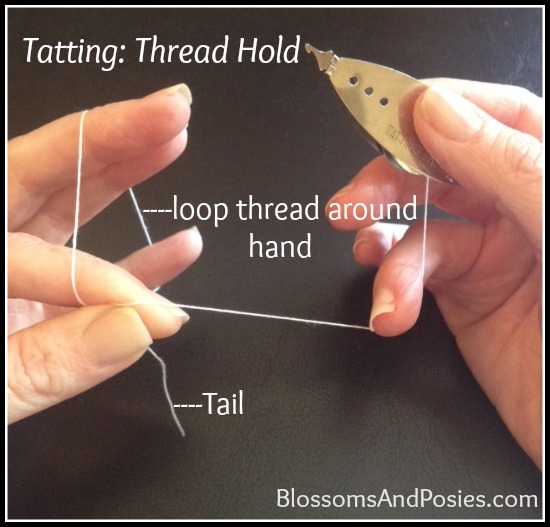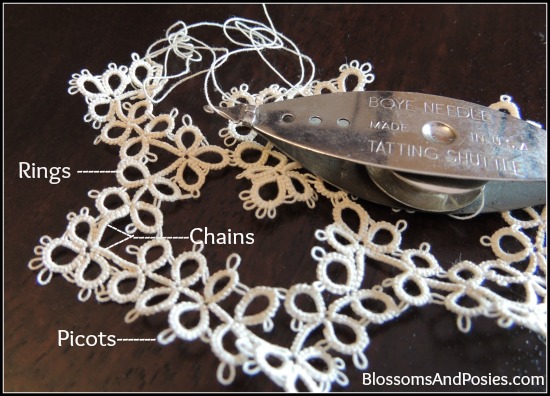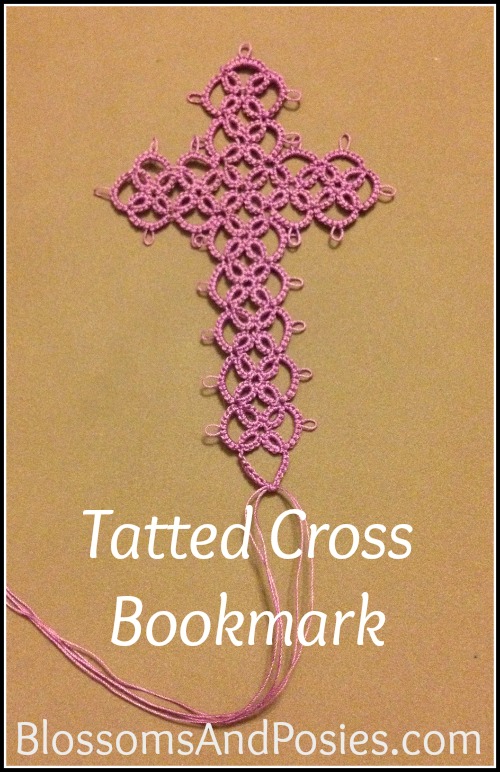I am delighted to welcome my dear friend Ali Shaw of Heartfelt Reflections today! Ali and I are “real life” friends — homeschooling moms who met at theater class then discovered a mutual love of words, the Word and crafting. Now we both write at Do Not Depart, and meet weekly with our daughters for craft time. While I stick with knitting, Ali often brings a tatting project. I had never heard of tatting until Ali introduced me to it. Today she is guest posting and teaching us about the art of tatting! This post contains affiliate links. – Patti
Perhaps you’ve seen and admired beautiful lace trim on an old dress in a museum or a doily at Great-grandma’s house. There’s a possibility that the beautiful, delicate work you’ve noticed was made of tatted lace.
What is Tatting?
Tatting is an old-fashioned decorative art that probably originated in the early 1800’s in Europe. Tatting is lacework that’s made using fine thread and a small, oval shaped handheld shuttle.
First, thread is wound onto the shuttle. A right handed tatter would hold the shuttle in their right hand. This would be their “working hand.”
The long tail of the shuttle thread is then looped around the left hand and the working hand then weaves the shuttle thread back and forth through the loop, which is actually called a “ring.”
Essentially, tatting is knot-making.
Each tatted stitch is composed of two parts. When combined, the two parts make one knot that sits on top of the loop. Many stitches are tatted alongside each other on the same loop, or ring. The key is that each knot must slide along the ring so that when the ring thread is pulled tight it forms a closed ring of tatted stitches. In tatting, if a stitch isn’t formed properly the ring won’t close. (Remember that tatting is knot work, so the mistake must be unknotted or “picked out”, or the work must be begun again.)
A chain stitch can also be created (using an additional ball of thread – see photo below.) Tatting is easily recognized in that it consists of rings and chains.
My great-aunt was a tatter and I loved to watch her tat when I was a very little girl. I always wanted to learn the art, but by the time I was old enough I had no one to teach me. But about 13 years ago I decided to teach myself when I saw this great book by tatting expert Rebecca Jones: The Complete Book of Tatting. This is a wonderful book for a beginner because it gives 5 different methods of tatting. If one way doesn’t work for you there’s still a chance that you can learn to tat using another method! The author even includes instructions for needle tatting. That’s another method of tatting that does not involve a shuttle, but rather a specialized needle, and accomplishes a nearly identical look. The book is also full of lovely patterns and additional information that is helpful to experienced tatters. I still use this book often!
There are some really beautiful tatting shuttles that I consider works of art in themselves, but my favorite is this practical shuttle. I love this shuttle because I can keep several bobbins on hand pre-wound with different colors of thread. All I have to do is pop in a bobbin and I’m ready to tat. And the little hook on the top is perfect for picking out mistakes (yep, I still make them!) and for forming picots (those pretty, decorative loops on the ring). And because most of my projects are small, I prefer to buy small spools of thread in a variety of colors.
What can you make by tatting?
Because tatting is fine lacework, the projects are delicate and feminine. Lace trim for socks, pillow cases, handkerchiefs, and so on, can be made and then sewed onto the item. Doilies can be tatted, and I’ve even seen photos of tatted tablecloths! (That project would take me years to complete!) Tatted lace also makes beautiful bookmarks, earrings, bracelets, necklaces, headbands, and even motifs to apply to other projects. Experienced tatters can even add beads onto the threads and picots of a project which looks especially beautiful on tatted jewelry. With a creative mind, the possibilities are endless!
Here’s a photo of one of my recent projects:
So, what do you think? Would you like to learn how to tat? Do you know someone who does? And have you seen tatted lace before?


